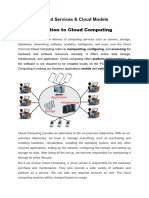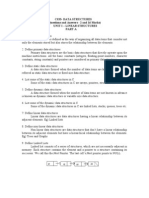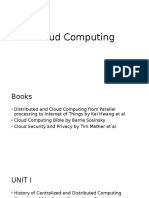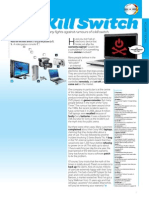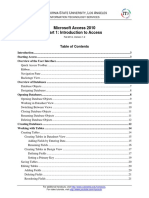0% found this document useful (0 votes)
67 views7 pagesCloud Computing
Cloud computing delivers computing services over the internet, allowing users to access resources without owning physical servers. It includes three main service models: IaaS, PaaS, and SaaS, each catering to different user needs and responsibilities. Cloud deployment models include public, private, hybrid, and community clouds, each with distinct advantages and use cases.
Uploaded by
venkataprathibaCopyright
© © All Rights Reserved
We take content rights seriously. If you suspect this is your content, claim it here.
Available Formats
Download as DOCX, PDF, TXT or read online on Scribd
0% found this document useful (0 votes)
67 views7 pagesCloud Computing
Cloud computing delivers computing services over the internet, allowing users to access resources without owning physical servers. It includes three main service models: IaaS, PaaS, and SaaS, each catering to different user needs and responsibilities. Cloud deployment models include public, private, hybrid, and community clouds, each with distinct advantages and use cases.
Uploaded by
venkataprathibaCopyright
© © All Rights Reserved
We take content rights seriously. If you suspect this is your content, claim it here.
Available Formats
Download as DOCX, PDF, TXT or read online on Scribd
/ 7

























